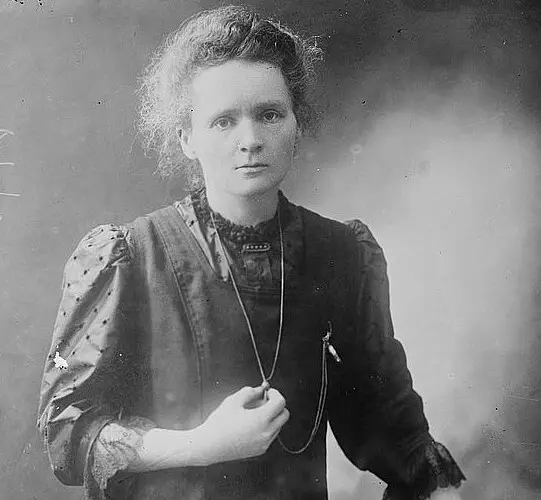A Revolutionary Mind in a Restrictive Era
Marie Curie, born Maria Sklodowska in Warsaw, Poland, in 1867, forever altered the course of science with her groundbreaking work on radioactivity. In an era when women were often denied formal education, Curie’s brilliance, determination, and pioneering spirit transcended barriers and led to achievements that still resonate today. As the first woman to win a Nobel Prize, and the only person to win it in two different scientific fields (Physics and Chemistry), Curie not only transformed our understanding of atomic science but also shattered gender norms. This is the story of a woman who redefined what was possible for science and for women in academia.
Early Life: From Warsaw to the World
Marie Curie’s journey began in a politically suppressed Poland, under the rule of the Russian Empire, where education for women was severely restricted. Nevertheless, she excelled academically, inspired by her parents, both educators. Determined to pursue higher education, Curie moved to Paris in 1891 to attend the University of Paris (Sorbonne), where she faced financial hardship and studied in cramped, cold conditions. Despite these challenges, her brilliance in physics and mathematics shone through, laying the foundation for her later scientific breakthroughs.
In Paris, she met and married Pierre Curie, a prominent physicist. Their intellectual partnership would prove transformative—not just for their personal lives but for science as a whole. Marie and Pierre embarked on collaborative research that would lead to one of the most important discoveries in modern science.
Discovery of Radioactivity: Unlocking the Atom’s Power
In 1896, Curie began her doctoral research, focusing on the work of Henri Becquerel, who had discovered that uranium emitted mysterious rays. Marie Curie was determined to delve deeper, meticulously measuring the strength of these rays in various substances. This led her to the groundbreaking realization that certain materials, such as thorium, also emitted this energy, which she named “radioactivity.”
Curie’s research culminated in the discovery of two new elements: polonium (named after her homeland, Poland) and radium. These discoveries, while revolutionary for science, were physically taxing. Curie worked with radioactive materials for years without protective equipment, unknowingly endangering her health. Despite the risks, she continued to push the boundaries of what was known about atomic energy, eventually winning her first Nobel Prize in Physics in 1903, shared with her husband Pierre and Henri Becquerel.
A Legacy Cemented: The Nobel Prizes and Beyond
Marie Curie’s scientific contributions did not stop at the discovery of radioactivity. In 1911, she was awarded a second Nobel Prize, this time in Chemistry, for her continued work on radium and its compounds. This made her the first person ever to win two Nobel Prizes in different scientific fields—a feat that remains rare even today.
Curie’s dedication to her research persisted, even after Pierre’s tragic death in 1906. Widowed and raising two daughters, Curie took on the role of professor at the Sorbonne, becoming the first woman to hold such a position. During World War I, she applied her scientific expertise to develop mobile X-ray units, known as “Little Curies,” which greatly improved the medical treatment of wounded soldiers on the front lines.
Curie’s work had far-reaching consequences, setting the stage for advancements in nuclear physics and medicine. Despite the toll her exposure to radioactivity took on her health—leading to her eventual death in 1934—her contributions paved the way for breakthroughs in cancer treatment, medical imaging, and our understanding of the atom.
The Price of Genius: Personal Sacrifices
While Marie Curie is best remembered for her scientific achievements, her personal life was marked by both great tragedy and triumph. The sudden loss of her husband Pierre was a profound blow, but Curie remained resilient, dedicating herself even more fervently to her work. This relentless pursuit of knowledge came at a price. Curie faced not only physical exhaustion from her research but also opposition from a male-dominated scientific community. Her achievements were often scrutinized or diminished because of her gender.
In 1911, when a personal relationship with fellow scientist Paul Langevin came to light, Curie was subjected to harsh criticism by the media, which sought to tarnish her reputation. Despite these obstacles, Curie never wavered in her pursuit of scientific discovery, nor did she allow personal attacks to overshadow her groundbreaking work.
A Lasting Impact: Curie’s Influence on Science and Society
Marie Curie’s legacy lives on, not just in scientific discoveries but in the opportunities she created for women in science. She helped redefine what women could achieve in academia and beyond, breaking down gender barriers that had long limited their access to education and professional recognition.
Her work with radioactive elements paved the way for the development of X-rays in medicine, leading to critical advances in diagnostic imaging and cancer treatment. Today, countless medical and scientific institutions bear her name, and her legacy continues to inspire generations of scientists.
Curie’s remarkable achievements serve as a reminder of the importance of perseverance, curiosity, and an unyielding commitment to knowledge. Through her contributions, she changed the world—not only unlocking the secrets of the atom but also proving that genius knows no gender.



